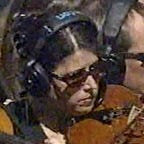Sitting Shiva
Blogpost #1
Witness in Silence
Sometimes there are no words, only silence. Words of advice, well-meaning condolences, solutions or prayers fall flat. Only silence can hold suffering.
In The Unsayable, we learn from Dr. Annie Rogers’ poignant trauma work with young girls that silence is sacred. Rogers courageously shares her own personal stories of trauma as well as stories of girls who have suffered immensely from sexual abuse in their childhood. Through her twenty years of clinical work and interviewing these girls, Rogers came to realize that traditional psychotherapy could not effectively help many of her clients who have lost the language to speak about their trauma. Rogers encountered the work of French psychoanalyst, Jacques Lacan, and she came to listen to her clients in a Lacanian way, focusing on listening to the unspoken, to the unconscious. By listening to the silence, Rogers helps these girls find expression of unsayable, guides them through the pain of the past and ultimately begin their healing journey.
Rogers’ work with her clients reminds us of Rambo’s notion of the witnessing Spirit that remains with the traumatized. In Spirit & Trauma, Shelly Rambo calls us for the theology of the Spirit to witness the sufferings that remain within the survivors’ bodies and psyche. Rambo claims that survivors of trauma need a living, breathing witness who can accompany and linger with them without being rushed into hope or resolution.
Most girls whom Rogers works with are sexually traumatized and do not, can not speak plainly about their shattering events. In her play and art therapy sessions with these girls, Rogers does not ask leading questions, nor interpret what she observes; instead, she is simply there to offer “the solidity of her own bodily presence” (p. 38) for the girls. She also watches for the smallest sign in her clients’ speech, action, coded and symbolic forms that appear in their art and play, and responds with a small sign. For example, she repeats and verbalizes a small portion of what she hears as she notices a pattern, a repetition or a slipping of the tongue in the client’s communication, which is called a signifier in Lacan’s language. Then she waits for the next step.
She lets her clients lead the process of therapeutic work because she believes that her clients’ unconscious will lead them to where they need to be in order to listen to what is unknown and unsaid. Rogers says, “Each symptom is the body’s attempt to speak what can’t be known or said. The body is versatile in terms of creating symptoms because the unconscious will insist on being heard” (p. 201). Rogers’ presence and listening to the cues of the “unsayable”, demands that her whole being be open and attuned to her clients with great patience, quiet expectation, and hope and trust for clients. This resonates with the image of Rambo’s witnessing Spirit that hovers over the formless dark water or the middle space and waits for the smallest opening for the emergence of new life.
In the middle space, how can we contain and hold silence as we witness and remain with another? We recognize that we first must learn to remain with ourselves and our own pain. To not be quick to seek resolutions. To intercede with groaning. To lament on behalf of another. To allow space for weeping when language is too deep to excavate.
It is our emerging belief that we are called to be witnesses, remain in the suffering with ourselves and the other and learn to embrace the silence when there are no words.
Sitting Shiva is the week-long practice of mourning in Judaism. Job 2:13 seems to capture the essence of Sitting Shiva. “Then they sat down on the ground with him for seven days and seven nights with no one speaking a word to him, for they saw that his pain was very great.” We chose Sitting Shiva as our group name because we are learning to be present and mourn together with those who mourn. We don’t always have words. Silence is sacred.
Rogers, Annie G. The Unsayable: The Hidden Language of Trauma. New York: Ballantine, 2007.
